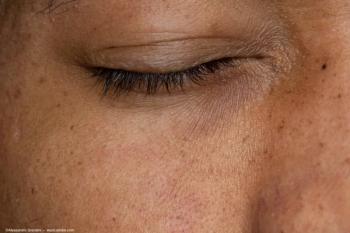
AMD research takes aim at choroidal neovascularization
Los Angeles—The medical management of age-related macular generation (AMD) has progressed by leaps and bounds in a very short space of time and generated a great deal of excitement among retina specialists. In particular, translational research has resulted in a large number of drugs that target choroidal neovascularization (CNV).
"The current era of therapy is quite exciting and we owe a great deal to translational research, through which we are now able to provide patients with targeted treatment to the choroidal membrane as well as to embark on new treatments that prevent CNV," said Jennifer Irene Lim, MD, associate professor of ophthalmology and medical director of clinical trials at the Doheny Eye Institute, Keck School of Medicine, department of ophthalmology, University of Southern California, Los Angeles.
She provided an overview of the advances in photodynamic therapy (PDT), anti-angiogenic therapy including anecortave acetate (Retaane, Alcon Laboratories), anti-vascular endothelial growth factor (VEGF) therapy, gene therapy, and tubulin-binding agents.
At this time, phase II and III clinical trials of intravitreal and sub-Tenon's therapy are under way.
PDT that is more selective may be in the pipeline. An animal study has shown that verteporfin combined with a homing peptide to VEGF receptor 2 results in 100% closure of the CNV. There is a minimal effect on the retinal pigment epithelium and no photoreceptor damage. This may enhance efficacy and selectivity, Dr. Lim pointed out.
Angiostatic agents such as anecortave acetate are administered as a posterior juxtascleral depot injection every 6 months. This drug can inhibit the progression of proliferation of vascular endothelial cells and extracellular matrix breakdown.
"In a phase II study, the 15-mg dose was superior to placebo. In a phase III clinical trial, when anecortave acetate was compared with PDT, 47% of eyes that received the former compared with 49% that received the latter had less than a three-line loss of visual acuity. The study had a noninferiority design and did not meet its primary endpoint," she said.
Anti-angiogenic anti-VEGF therapies include the VEGF aptamer, the anti-VEGF antibody, small interfering RNA, and squalamine. The VEGF aptamer, pegaptanib sodium (Macugen, Eyetech Pharmaceuticals/Pfizer), was studied in a phase III multicenter, randomized clinical trial, and three doses of the drug were compared with the standard of usual care in 1,186 patients with all types of CNV. Lesions ranged up to 12 disc areas.
The anti-VEGF antibody, ranibizumab (Lucentis, Genentech), a mouse monoclonal antibody, was shown in two phase II clinical trials to result in 94% stable or improved vision 98 days after administration, with 26% of patients achieving three or more lines of improvement in vision. Three phase III trials are ongoing, with results expected shortly.
New technology
A new technology, small interfering RNA, is now being applied to ophthalmology, according to Dr. Lim.
"Cand5 is a 21-nucleotide double-stranded RNA, given via an intravitreal injection, that causes RNA interference. Use of this can down-regulate VEGF production and thus is 100 times more potent than either an antibody or aptamer to the VEGF molecule. In a primate study, there was a dose-dependent reduction of neovascularization and vessel leakage with this drug," Dr. Lim said.
Newsletter
Don’t miss out—get Ophthalmology Times updates on the latest clinical advancements and expert interviews, straight to your inbox.


















































.png)


